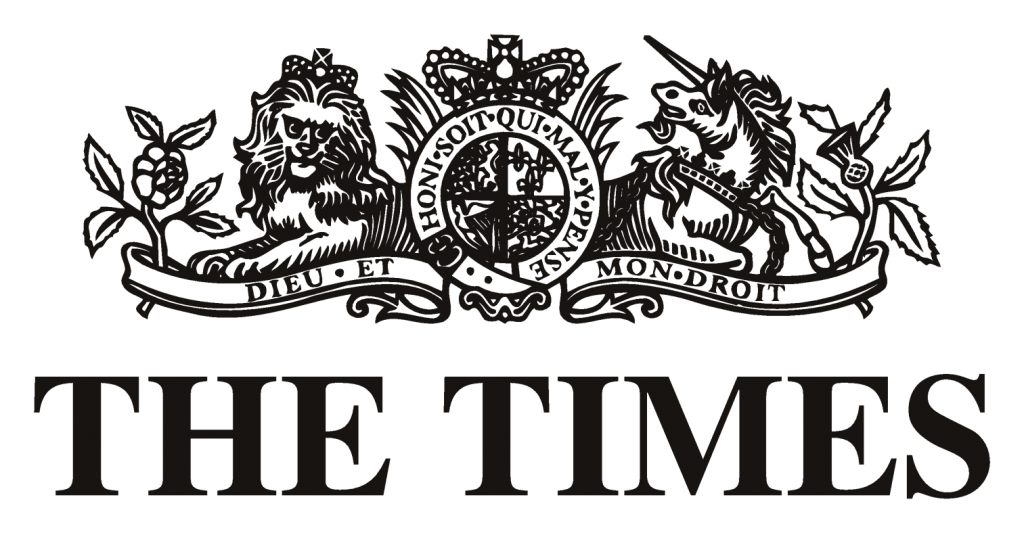Daily Briefing |
TODAY'S CLIMATE AND ENERGY HEADLINES
Expert analysis direct to your inbox.
Every weekday morning, in time for your morning coffee, Carbon Brief sends out a free email known as the “Daily Briefing” to thousands of subscribers around the world. The email is a digest of the past 24 hours of media coverage related to climate change and energy, as well as our pick of the key studies published in peer-reviewed journals.
Sign up here.
Today's climate and energy headlines:
- Winter storms in US set to continue while Europe sees record warmth
- World Bank seeks more funds to address climate change, other crises – document
- Britain sees out the year with clean power records amid windy weather
- UK: Coal mine opponents begin legal fight
- UK: Government can afford to scrap planned April rise in household energy bills, say analysts
- Extinction Rebellion has finally discovered the best way to tackle the climate crisis
- Regional and tele-connected impacts of the Tibetan Plateau surface darkening
News.
The extreme weather seen across North America in recent weeks “looks set to continue into the new year”, according to New Scientist. It says storms hitting US states – as far south as Texas – and the Canadian provinces of Quebec and Ontario were “caused by Arctic winds known as the polar vortex dipping south over North America”. The magazine also notes that “some scientists suspect that human-caused climate change may be fuelling this instability in polar weather systems”. Meanwhile, it says that in Europe many nations saw record high temperatures as the year began. It cites Maximiliano Herrera, an independent climatologist who tracks extreme temperatures, who says Belarus, the Czech Republic, Denmark, Latvia, Lithuania, the Netherlands and Poland all recorded their warmest-ever January days on 1 January. BBC News says that, across Europe, national records have fallen in eight countries, and regional records in another three. For example, it says that Warsaw, Poland, saw 18.9C on Sunday and Bilbao, Spain, was 25.1C –more than 10C above average. It notes that “records are broken all the time, but it is unusual for the difference to be more than a few 10ths of a degree”.
Back in the US, several outlets examine the conditions currently being faced in California. The New York Times has an article about “how climate change is shaping California’s winter storms”. It notes that “when these storms, which are known as atmospheric rivers, are particularly severe or sweep through in rapid succession, they can do more harm than good”. One climatologist notes that so far this year the storms have been in line with past ones “except in their unrelenting pace”. According to Forbes, forecasters have warned that “life threatening” flooding and high winds could be coming to the region less than a week after near-record rainfall in San Francisco. The San Francisco Chronicle says that while the city is undertaking three major infrastructure projects to help low-lying neighbourhoods that are vulnerable to flooding. Costing more than $600m, those projects are still years from completion, it says. Meanwhile, in Texas, the Texas Tribune reports on new findings from the state’s Department of Agriculture that have “linked climate change with food insecurity and identified it as a potential threat to the state’s food supply”. This comes after 2022 was one of the driest years on record for Texas, with about 49% of the state still in drought conditions at the end of December.
In Australia, the Guardian reports that climate models used by the Bureau of Meteorology suggest that the nation could swing from three years of above-average rainfall to “one of the hottest, driest El Niño periods on record”. Finally, in the Philippines, the New York Times reports that heavy rains on Christmas Day triggered flooding and landslides, killing at least 51 people and displacing thousands.
The World Bank is “seeking to vastly expand its lending capacity to address climate change” alongside other global crises, according to an “evolution roadmap” seen by Reuters. The document, which has been sent out to shareholder governments, marks the start of a negotiation process to alter the bank’s mission and financial resources and “shift it away from a country- and project-specific lending model” used since it was set up at the end of the second world war, the newswire reports. The inadequacy of the current model has been a “topic of fierce debate” in recent month, due in part to the growing threat of climate change, the article notes. It says the bank will consider new capital increases and ways to mobilise more private finance, but it “is not ready to bow to demands from some non-profit organisations to abandon its longstanding top-tier credit rating to boost lending”.
Speaking to the Guardian in December, US climate envoy John Kerry reflected on the people in developing countries who are feeling increasingly angry and “victimised” by climate change. He said the US was committed to helping such nations deal with the “loss and damage” caused by climate change, but that the details of the new fund set up at the COP27 climate summit would need more work in 2023.
Meanwhile, Norway has said the Amazon Fund, an initiative for backing forest protection, has been re-activated now that Brazilian president Luiz Inacio Lula da Silva is back in office and pledging to halt deforestation, Reuters reports. Norway is the biggest donor to the fund, which has been frozen since August 2019 when former far-right president Jair Bolsonaro “abolished its governing board and action plans”. However, the newswire says, it still has about 3.4bn reais ($620m) at its disposal.
A spell of windy weather helped to set new records for low-carbon electricity in Britain towards the end of the year, according to the Press Association. It says that the nation’s wind turbines set new records for the third time in 2022 on December 30, generating 20.91 gigawatts (GW) of power. National Grid Electricity System Operator also confirmed that a new record was set for the share of electricity on the grid coming from zero-carbon sources – renewables and nuclear – as they supplied 87.2% of total power. The news outlet notes that this “shows the British grid is getting closer to times when there will be 100% zero-carbon operation”, with the annual share of generation from such sources at 55-59% over the past couple of years. The Guardian points out that the “surge in wind generation represents a remarkable reversal in fortunes” following a cold snap that was marked by relatively low wind speeds. It notes that UK prime minister Rishi Sunak is expected to overturn a moratorium on new onshore wind projects this year, with a consultation on the matter due to run until March. A local news story from BBC News highlights some of the issues around onshore wind, quoting locals living near a proposed wind farm site in Wales who are unhappy about the proximity of the turbines. Meanwhile, an article in the Conversation reflects on how big wind turbines might get, with some offshore varieties already “skyscraper-sized”.
Lawyers for climate campaigners in Cumbria have written to levelling-up secretary Michael Gove, warning him that they are preparing to lodge a judicial review against the decision to open a new coal mine in the area, the Times reports. The newspaper notes that the new mine will produced coking coal for steel, “resulting in millions of tonnes of carbon emissions”. The lawyers argue that there are eight grounds for challenge, including the international impact of granting permission for the mine being discounted by the inspector and Gove, and how the mine’s promise of net-zero operations would be met by carbon offsets. It adds that the letter was sent to Gove before Christmas, and the South Lakes Action on Climate Change charity behind the action expects to lodge papers requesting a legal challenge next week.
BusinessGreen reports on new analysis by steelmaking company Tata Steel, which concludes that the UK may need more than 10m tonnes of steel over the coming years to build the low-carbon infrastructure required to meet its net-zero emissions goals. To do this, it stresses that “urgent action is needed to develop low-carbon steel production in the UK”. Meanwhile, Energy Monitor has an article about the main technologies in the running to decarbonise steel. Columnist Helen Thomas writes in the Financial Times that the UK steel sector asking for support “feels less an annual event and more a constant state of affairs”. She said support for the industry “should hinge on short-term commitments to reduce emissions and pledges to invest in new technology around decarbonisation”.
Falling wholesale gas and electricity prices are cutting the cost of the government’s support scheme for household energy bills, meaning it could afford to cancel a planned increase in April, according to the Times. As it stands, household energy tariffs subsidised under the government’s energy price guarantee are expected to rise from a maximum of £2,500 a year to £3,000 a year from April, “to reduce the cost to the taxpayer”. However, new analysis by Pantheon Macroeconomics suggests that this increase could be cancelled affordably, as “wholesale energy prices have receded significantly” since the decision was made “after unusually mild weather helped Europe to maintain healthy gas storage stocks”.
Meanwhile, the Herald warns of the costs to rural Scottish homes of meeting “tough energy efficiency standards set by the Scottish government”. A Sun editorial notes that Londoners are less likely to drive than those in other parts of the country, and says this is something UK chancellor Jeremy Hunt should account for when considering increasing fuel duty.
Comment.
The Independent’s chief political commentator John Rentoul appears to take the credit for Extinction Rebellion’s latest change in tactics. “It took more than a year for the message to percolate, but Extinction Rebellion, or XR, has acted on the advice of an editorial in The Independent,” he writes. “In August 2021, we suggested that the environmental protest group should compromise: ‘It should eschew demos that succeed only in persuading fair-minded people that environmentalists are a nuisance intent on making life worse for them.’” Rentoul says that they pointed out that public opinion of the group was unfavourable and that, while protests had raised the group’s profile, “it had failed to persuade people of the urgent need for dramatic lifestyle changes to avert climate disaster”. He writes that this view has been validated by the group announcing that they have decided “to temporarily shift away from public disruption as a primary tactic”.
Science.
Surface albedo darkening in the Tibetan Plateau (TP) will cause its glaciers to lose around 7% of its volume by the end of the century under a high emission scenario, according to new research. The authors use a coupled land-atmosphere global climate model and a glacier model to assess how surface albedo darkening – a decrease in surface reflectiveness – over the Tibetan Plateau will impact local glaciers and remote Asian monsoon systems this century. They project an increase in local temperature of 0.24C, which would “strengthen the elevated heat pump of TP, increasing south Asian monsoon precipitation while exacerbating the current ‘south flood-north drought’ pattern over east Asia”.












